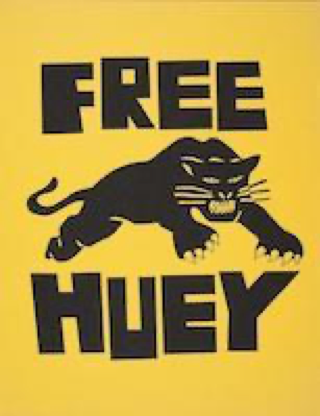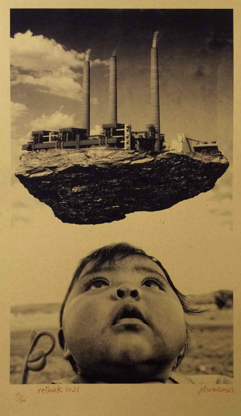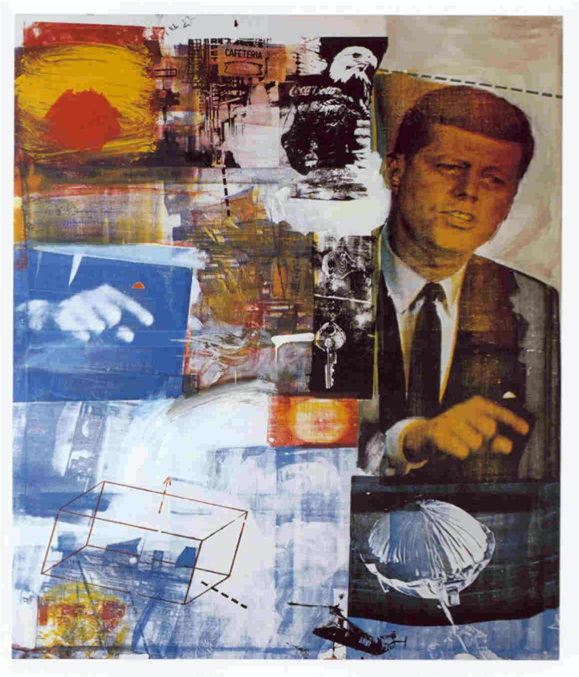

Chip Thomas 2011/15 1 color print using halftone screen

Roger Peet. 2019 5 color screenprint.
Overview
OVERVIEW:
This course has three main learning objectives:
1) to learn the creative processes of screen-printing in order to develop the skills needed to produce prints, leading up to the creation of an edition;
2) to learn how to use these screen-printing skills to create several types of prints for use in different contexts (for example from galleries to protests);
3) to develop and complete a self-directed creative project using screen printing.
Introduction

Robert Rauschenberg, Retroactive I, 1964, oil and silkscreen ink on canvas, 84 x 60 in.
This lower-division course has been written to introduce novice students to the practice of screen-printing.
Screen-printing has been used for a wide range of purposes – from fine art to poster making. Some artists have used screen printing in addition to other art-making processes, as can be seen in the example Retroactive I (1964) above. This is an artwork that has blended processes to include screen printing in order that the artist can include a specific type of image in his art. In this painting, the artist wants to use an image that not only looks like but actually is a mass-media image in order that he can address the changes that occurred in the connection between politics and the media with this particular president (JFK). While this is an artwork that we would consider to be within the fine art category, it successfully exemplifies how an artist might use screen-printing in a more expanded way. The following examples show some of the different types of recent screen-prints that are connected to political issues. They are included to show the range of prints that are made and used today.
This course
Students in this course will be exposed to examples of artists and artworks along with this range of print types as they define a project and intent of their own. Students are free to choose the nature of their project, and all choices will be respected and supported. The practical skills of screen-printing will be introduced to students via demonstrations, followed by individual practice. It is an important part of this course that students who complete it leave with skills that are valuable to them going forward. There are several tools that students in this course will become competent in using that will produce the skills students need to make prints, including software, composition, colour theory, in addition to the manual processes of screen prep and printing. Learning to critique art, or in a context of creativity is a very valuable addition to students’ critical thinking that students develop throughout their courses at Saint Mary’s.
Process
In many disciplines, researchers use field notes as a way of collecting raw information that is then compiled, collated, processed to produce meaningful data. Students in this class will be instructed in this process and will engage in it directly, on (virtual) site. Students will use this information to create and populate a journal online that will house both images and text. This journal will give them the opportunity to store notes and points of reference that they will be able to access and update anywhere, on any device (phone, tablet, computer). Use of this type of journal will be demonstrated to students. Students may use the journal to reflect upon their experiences as they develop the range of skills they will build over the semester. The journal will become a valuable tool that can be used in tandem with a traditional paper sketchbook if they wish. This is an important detail in the course as some students cannot draw and fear that their grade will be lower by default. There is no requirement for drawing skills in this course.
Therefore, studying in this class will require students to develop both visual and textual ideas relating to the uses of screen-printing within art (generally speaking) and in particular, socially-engaged art. There is an enormous array of effects possible within screen-printing, ranging from subtle textures that rely upon a very high level of precision and exactitude to visual distortions and hand-drawn images and text. Students will have instruction in these techniques, and have the opportunity to use these types of imagery within their own forms of expression. At the end of the course, students will have produced several personal prints, along with a print edition that is the result of their personal project. A print edition is a set of prints that are identical.